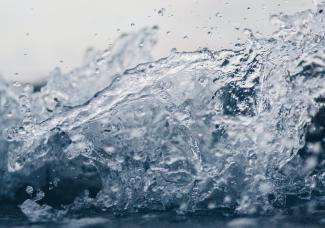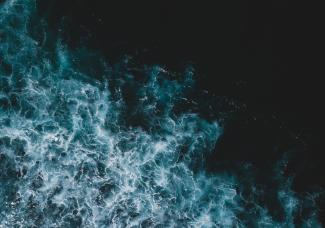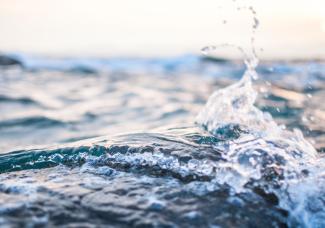Discovery
1989: Professor Leighton discovers a new ultrasonic signal and identifies its source to be surface waves rippling on the walls of underwater gas bubbles.
Pulsing the sound enhances bubble activity
1989: Professor Leighton discovers ways in which pulsing the sound field can enhance the bubble activity, which leads to a long line of research on pulsing sound fields to enhance the effect the bubbles have on targets.
Living cells
1990: Professor Leighton begins to investigate how acoustically-excited bubbles might affect living cells, human and otherwise, including effects on tumour cells.
Theory on how sound forces bubbles to penetrate cracks
1990: Professor Leighton published on theory on how sound drive bubbles towards the surfaces they need to treat. This theory is later refined in 2018 through collaboration with with Professor Maksimov from Vladivostok to derive include the effect of the surface waves themselves.
Climate change
1992: Professor Leighton starts to use the acoustic excitation of surface waves on the bubble wall to count and size the number of bubbles in the ocean, which leads him to:
- Identify key parameters needed for global climate models to calculate how oceans affect climate by asking as a sink or source for greenhouse gases;
- Design sensors that in 2020 were placed by European-wide teams on North Sea seabed to monitor for leaks from Carbon Capture and Storage reservoirs.
How sound fields in water behave when surrounded by air
1999: Professor Leighton, his colleagues and students research a new theory for sound interaction with porous solid targets (also used for osteoporosis and bone health monitoring).
Theory on how sound stimulates surface ripples on bubble walls
2001: Professor Leighton collaborates with Professor Maksimov from Vladivostok to derive the theoretical conditions for generating the surface ripples, refined in 2012 to highlight the resonances responses.
How sound fields in water behave when surrounded by air
2003: Professor Leighton and students publish on how sound fields in water behave when surrounded by air, and how microscopic natural particles in the water affect this.
Flow around the bubble
2004: Professor leighton starts to predict and measure flow around the bubbles, caused by the acoustically-excited surface waves.
Radar and sonar
2004: Professor Leighton's use of sound to detect bubbles for climate change leads him to:
- Invent the world's only sonar that can detect mines in bubbly shoreline water;
- Invent a radar for detecting IEDs and buried catastrophe victims;
- Explain dolphin and whale behaviour;
- Design sensors for exploring oceans on other worlds.
How to send sound down curved columns of fluid
2009: Professor Leighton researches how sound can transmit down curved columns of fluid, publishing (to protect commercially-useful material) only in terms of how voices sound on other worlds.
Coupled waves
2012: Professor Leighton and his team publish on sound traveling down tubes using coupled waves, and use it to produce bubble counter for words most powerful pulsed neutron source (Oak Ridge, Tennessee). Craig Dolder, who has been working on coupled waves for his Ph.D. in Austin Texas, travels to Montreal, Canada where Prof Leighton is receiving the 2013 Helmholtz-Rayleigh Interdisciplinary Silver Medal of the Acoustical Society of America, and discusses joining the team.
First applications
2014: On receipt of Rayleigh Gold Medal of the Institute of Acoustics, Professor Leighton publishes on how the technology is effective at cleaning kitchens, bathrooms and baby equipment.
Controlled bubble generation
2015: Professor Leighton and collaborating chemists publish on controlled bubble generation using electrolysis.


